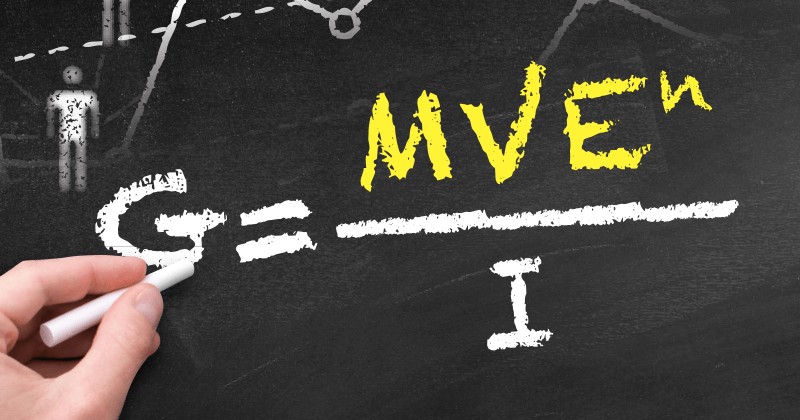We’ve reached the point where creating breakthrough customers experiences has become the primary function of most businesses.
No longer are customer experiences something for only user experience, marketing, and service to manage. Real progress in this area comes from collaboration, and can’t be the job of one person. It takes a team effort from across the organization working in unison to listen, learn, and recommend these next-gen interactions.
Today’s winning experiences are the outcome of integrated strategic planning, execution, and insights by cross-functional teams and cognitive learning capabilities. Strategy, marketing, service, IT, and R&D teams know the success model lies in thinking with agility to plan, execute, learn, and repeat this process over and over—both as humans and through machine learning.
These teams are leveraging the concepts of Minimum Viable Product (MVP) and continuous development for use in building omnichannel experiences. This approach helps achieve agility, flexibility, speed to market, and, most importantly, on-point experiences that engage and empower employees and customers.
MVP in action
Modern planning has proven that experience innovations are most effectively created and adopted when they are invented by collaborative teams and designed for continuous improvement. The good news for customer experience leaders is that such an approach is likely already happening in your business—in the development of major initiatives including e-commerce, supply chain, web experience, and data strategy.
The fast pace of technology and capabilities in these areas has created a shift to agile project plans and lean development for platform-centric work, called Minimum Viable Product. Companies release products with just enough features and underlying structure to satisfy early customers, with the goal of gathering feedback and quickly iterating. The product launch is considered more of an invitation to collaborate and deploy validated learning in the development of an ever-evolving product. Once launched, new development cycles are so rapid that innovations are pushed into production in days and hours, as compared to months and weeks.
Applying these best practices from platform programs can jumpstart nimble yet holistic customer experience solutions in your organization.
The value created by an MVP approach in customer experience comes in the form of a profit wedge, where top-line revenues increase as costs proportionately decrease. Essentially, solutions go live with less cost and begin generating revenue earlier to offset the continuous development of the solutions.
From MVP to MVE
Executives can apply the MVP approach in a customer capacity to create Minimum Viable Experiences (MVE). There are applications for customer interaction design and strategy development, as well as enhancement of current interactions and operations. When shifting to digital channels, for example, why not launch a “wireframe” program and invite users and internal stakeholders to share their ideas for how to best maintain an app or chatbots?
The operative word in this case is “viable.” The basic foundations of your (product or customer experience) solution must be firmly in place. It is more effective and efficient to deliver a first release with the core elements intact, so it will be ready to build on. If it’s too nebulous, an MVP approach will become too cloudy and impact results. This is why teamwork from the beginning is so important.
An agile approach gets customer interaction frameworks up and running quickly, but when it comes to creating strong long-term experiences, more traditional planning can be added to focus on consistent strategy and execution across the enterprise. Combine agile with traditional “waterfall” steps to establish a long-term vision for the initiative, key functional and non-functional requirements, and a clear path to the live version of the solution before sprints begin. Too often, a pure agile approach leads to a solution that is not foundationally architected, or sprint plans that have not contemplated key integrations into a high-functioning platform. Meanwhile, waterfall development sets the entire project from start to finish, which adds rigidity and time to the development process that many programs can’t afford.
A “watergile” approach takes the best of both worlds to develop initiatives. Start with the end in mind, create development requirements, and set a sprint plan. Be flexible to allow changes to sprints, while maintaining focus on the vision, end result, and timeline. Think big, start small, and move fast to create customer initiatives that work.
For example, launch a customer complaint initiative based on the journey of one type of customer persona, then test and learn on the fly. Collaborate to align an entire experience to match the value, needs, and behavior of a high-value, digital-averse customer who may have a complaint. With this first layer in place, add other personas, or change these interaction specifics based on actual behavior and feedback. Once in the market, shift to a more agile approach to continuously develop quick improvements and future iterations based on participation from consumers and the collective team.
Making it happen
Companies everywhere are making the shift toward a nimble approach to experience, whether consciously or unconsciously. Many systems integrators, agencies, and consultancies espouse these strategies. And while they recognize the strategy and may support change management to enact, few actually model this approach themselves. That’s because it’s hard. There are many moving parts, many constituencies, and an ever-changing goal post of technology and customer expectations.
Most over-index in one area (tech/business/marketing), leaving gaps in the full initiative. A balanced team made up of business strategists, experience consultants, technical architects, marketing, service, operations, and data scientists must operate in parallel and synergy, not serially, as has been the case for years.
Here are some recommendations for how to enact a product development focus to your customer experience initiatives:
1. Set an internal customer-focused mindset. Everyone’s got to work together. Create an internal environment that expects and rewards cross-functional teams and customer experience excellence. Without customer centricity as the backbone of your business, teams won’t consider these efforts a priority.
2. One persona at a time. Often companies try to accomplish too much up front, even in an agile process. We’ve seen many companies on the sidelines, unsure of where to start and therefore left out of the game. Like anything, you have to start somewhere. We begin with a few personas, and then layer others on top. In this way, the company and integrated teams can learn the rhythms and gain the muscle memory at the same time the experiences get into the market and continue to grow and improve. As one of the world’s largest airline companies likes to say, “Crawl, Walk, Run, Fly!”
3. Put your strategy to work. Customer strategy development is typically considered an individual function. That’s not feasible anymore. It’s imperative to connect strategy to the rest of the business (marketing, operations, IT) when establishing a realistic vision, setting a strategy, and determining specifics of the initiatives, along with when to bring on customers. In addition, you may have already developed a robust customer strategy, but the roadmap has yet to lead anywhere significant. Connect the dots between strategy and execution with an integrated team.
4. Set customer expectations. Consumers need to know that interactions or initiatives are not complete when they come across an MVP. Proactively communicate their role in the MVP approach, and how they can influence their own experience improvements by sharing ideas for each new release.
5. Design with insight in mind. Enable a continuous feedback loop and a seamless way for employees and customers to share feedback. Rely on integrated data analysis to uncover hidden insights or information not obvious. When designing programs, also design how the insight will be collected and disseminated quickly, in line with continuous development.
6. Showcase each iteration. Communicate enhancements so that participants see the evolution, and take ownership in its development.
Customer experience is the currency for growth. And yet winning customer experiences are never fully complete. So it’s important to create teams and processes designed to continuously iterate. An agile approach, backed by a strong, effective team, give companies the foundation they need to succeed with their customer programs. Bringing these experiences to customers faster and more frequently strengthens the relationship by engaging and empowering your customers, all the while building frequency and affinity.















